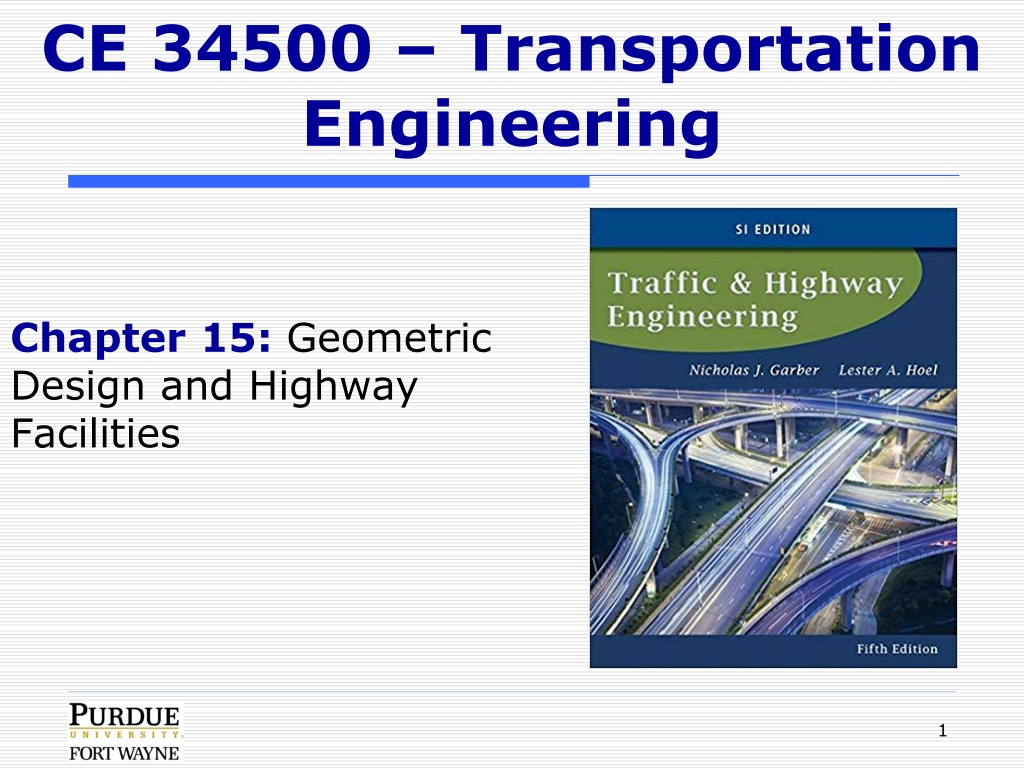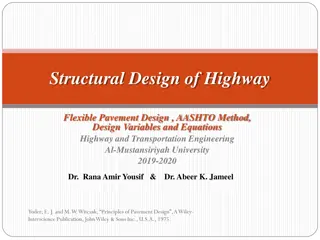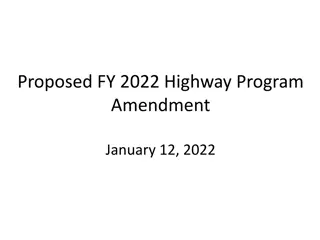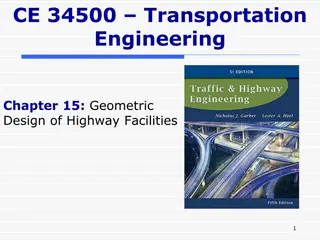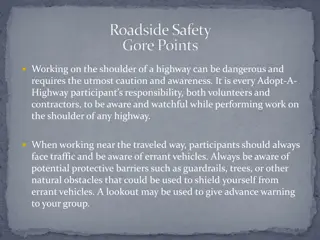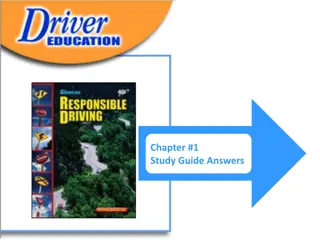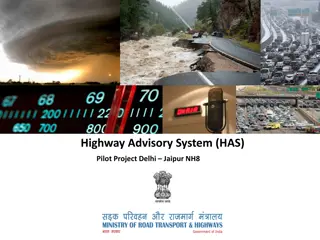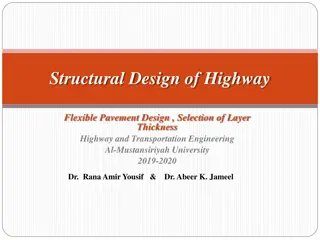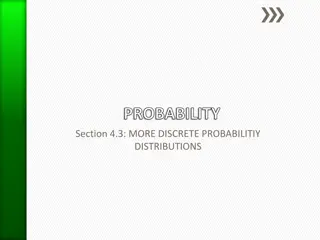Geometric Design and Highway Facilities Overview
Geometric design in transportation engineering involves components like roadway cross section, vertical and horizontal alignment, and roadside area. Horizontal alignment considers factors like centrifugal force and sight distance to ensure road safety. Different types of horizontal curves like simple, compound, reverse, and transition curves play a crucial role in designing highways.
Uploaded on Feb 24, 2025 | 0 Views
Download Presentation

Please find below an Image/Link to download the presentation.
The content on the website is provided AS IS for your information and personal use only. It may not be sold, licensed, or shared on other websites without obtaining consent from the author.If you encounter any issues during the download, it is possible that the publisher has removed the file from their server.
You are allowed to download the files provided on this website for personal or commercial use, subject to the condition that they are used lawfully. All files are the property of their respective owners.
The content on the website is provided AS IS for your information and personal use only. It may not be sold, licensed, or shared on other websites without obtaining consent from the author.
E N D
Presentation Transcript
CE 34500 Transportation Engineering Chapter 15: Geometric Design and Highway Facilities 1
Geometric Design Geometric Design consists of four major components Roadway Cross Section Vertical Alignment Horizontal Alignment Roadside Area
Horizontal Alignment Tangent Sections Horizontal Curves o Design criteria Centrifugal Force: Resisted by friction force between tires & roadway and by component of vehicle s weight resulting from superelevation Sight Distance: Roadside obstacle must be far enough from edge of roadway to allow a driver to see far enough ahead to react and stop to avoid striking an obstacle in roadway (stopping sight distance)
Horizontal Alignment Centrifugal Force Criterion 2 u =15 R ( ) + e sf
Horizontal Alignment Horizontal Sight Distance Criterion
Horizontal Alignment Horizontal Sight Distance Criterion ? = ?(1 ???28.65 ?) ?
Horizontal Alignment Horizontal Sight Distance Criterion
Horizontal Curves Types of Horizontal Curves o Simple: single circular curve connecting two tangents o Compound: combination of two back-to- back circular curves in same direction with no tangent section between them (PCC) o Reverse Curve: same as compound curve, except curves are in opposite direction o Transition (Spiral): single circular curve with spiral curves (varying radii) at each end)
Simple Curves = R 2 sin C 2 2 tan = 1 cos M R = R T 2 1 =R = 1 E R L 2 180 cos
Example 15.6 The intersection of a 40 curve is 55025 , and the PC is located at station 238+44.75. Determine the length of the curve, the station of the PT, the deflection angles, and the chord lengths for setting out the curve at whole stations from the PC. Figure 15.21 illustrates a layout of the curve.
Transition (Spiral) Curves 3 . 3 15 u = L RC
